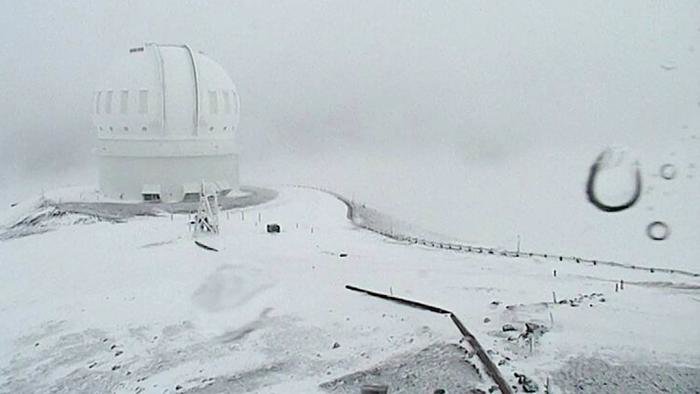
A winter storm warning is in effect for the summits of Mauna Loa and Mauna Kea through Saturday evening.
"Then we're expecting another round on Sunday and Sunday night," said Matthew Foster, a staff meteorologist with the National Weather Service in Honolulu.
The initial storm started on Thursday and was slowing down Saturday, "though some freezing drizzle is still possible," Foster said.
The next storm is currently about 400 miles west of the island of Kauai and should arrive over the islands sometime on Sunday, Foster said.
"This one won't be quite as strong when it moves over the Big Island, so we're putting it as possibly 12 more inches of snow," he said.
The rest of the island, and all of Hawaii, remains warm if somewhat wet, with heavy rains in some areas that have caused flash flooding.
"The grounds are already saturated now, so it doesn't take much," Foster said.
The snow at the peak of Mauna Loa is not uncommon because it is so high, nearly 14,000 feet.
"As long as we have deep enough clouds to support ice crystals, and when you have cold enough temperatures at the summit level, you can get snowfall," said Foster.
Mauna Loa and its sister peak of Mauna Kea are both volcanos. Mauna Kea is the highest point in the state of Hawaii.
Snow on the peaks is not uncommon in the colder months of the year, though deep snow is rare.
"We'll probably see three to five snow events a year during the cold season. Some years we might not get any, some years we might get more," said Foster.
The only other area of Hawaii that gets snow with any regularity is the Haleakalā volcano on Maui, which at about 10,000 feet gets snow once every five years or so, he said.



Comment: See also this earlier report: Over 2 feet of snow forecast for high ground in Hawaii